Good evening, FungiFriends!
Here is my contribution to #FungiFriday by @ewkaw :)
Another little sharing of the real photographic gems I found during my last vacation!
I've already told you about the trip I made to Serra da Estrela, well, on one of the short routes from Piódão to Foz de Égua (PR2 AGN), along damp paths, on a very rainy afternoon on the last day of the penultimate month of the year, I found two species of mushrooms flanking the path.
The first set I found was the Laccaria laccata, also known as the deceiving mushroom, so called because it can take on various shapes and colors, depending not only on its degree of maturity and development, but also on its water content. This small mushroom, with a cap measuring between 2 and 6 cm in diameter, has a convex shape which, as it matures and develops, flattens... And I managed to photograph the two main shapes.
Orange to brownish in color, it can be an opaque nacre when dry, from the top of a stem 2 to 10 cm long, it extends its irregular gills around the ventral portion of the hat. These mushrooms are also known as weed mushrooms due to their wide dispersal. As a curiosity, I can mention that these fungi were traditionally eaten by the Zapotec people, who lived in the Oxaca region of Mexico (source).
The second species of mushroom I found on this trail in the middle of the mountains is the Lactarius deliciosus. As some of you will be able to tell from its name, it has been referred to as a delicious mushroom, but its name doesn't entirely correspond to the truth, as its stem may not have such an appetizing taste. Also called delicious milk cap, or saffron milk cap, or red pine mushroom, they live in true symbiosis with the pine tree - a very common tree in this part of Portugal. Acidic coniferous soils are their favorite habitat, where they proliferate the most, establishing true mycorrhizal relationships with their host tree. Its convex carrot-orange cap, shaped like a vase or with a curled appearance (when not at maturity), is between 4 and 14 centimeters in diameter. Its gills develop over a firm, well-structured cap. As a curiosity, when consumed in large quantities, they can give the urine a reddish color (source).
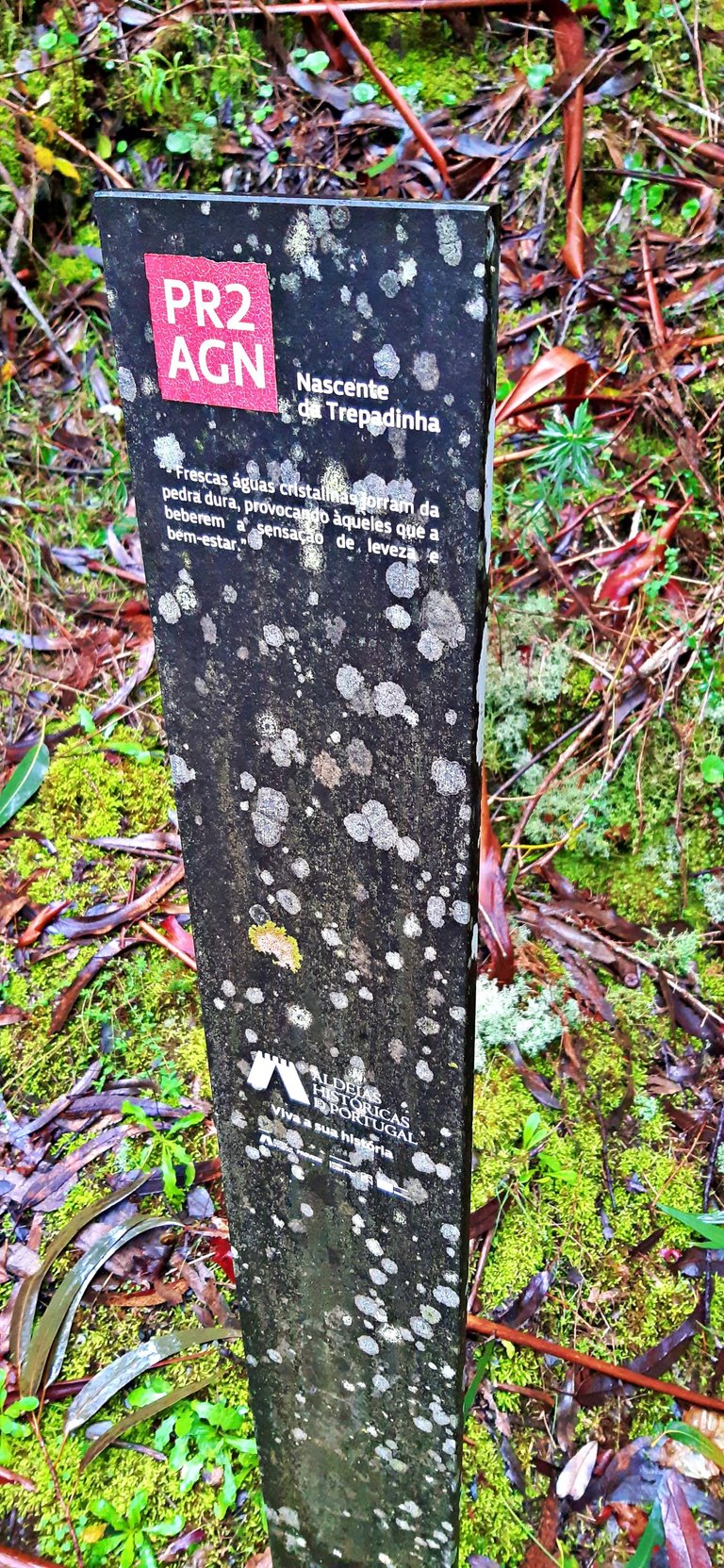
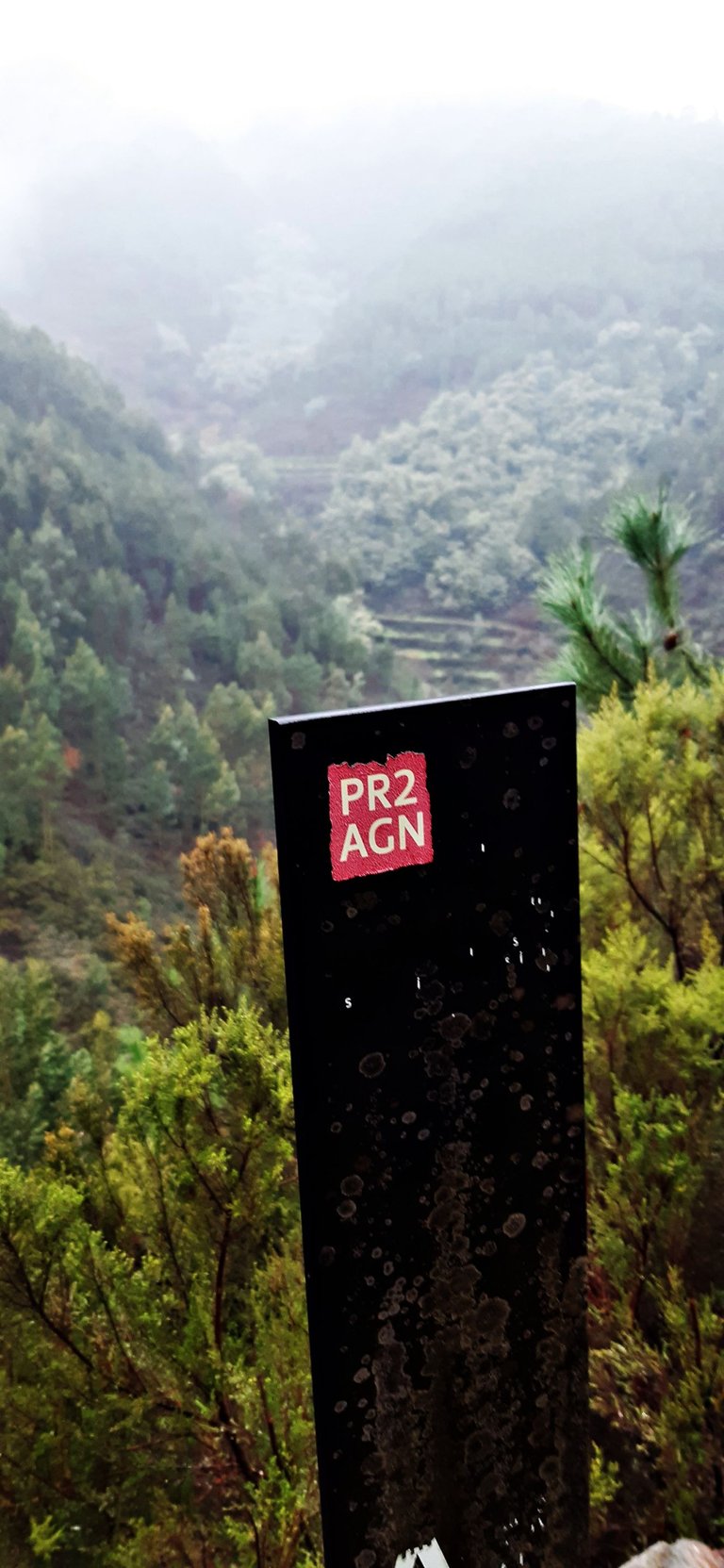
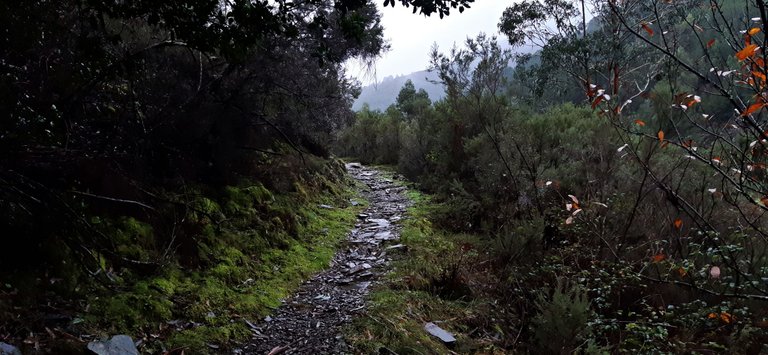
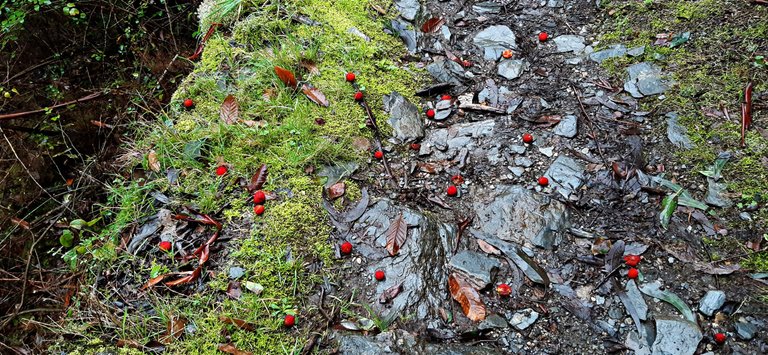
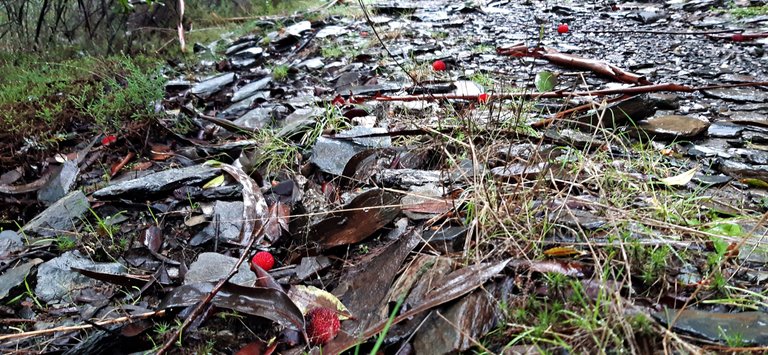
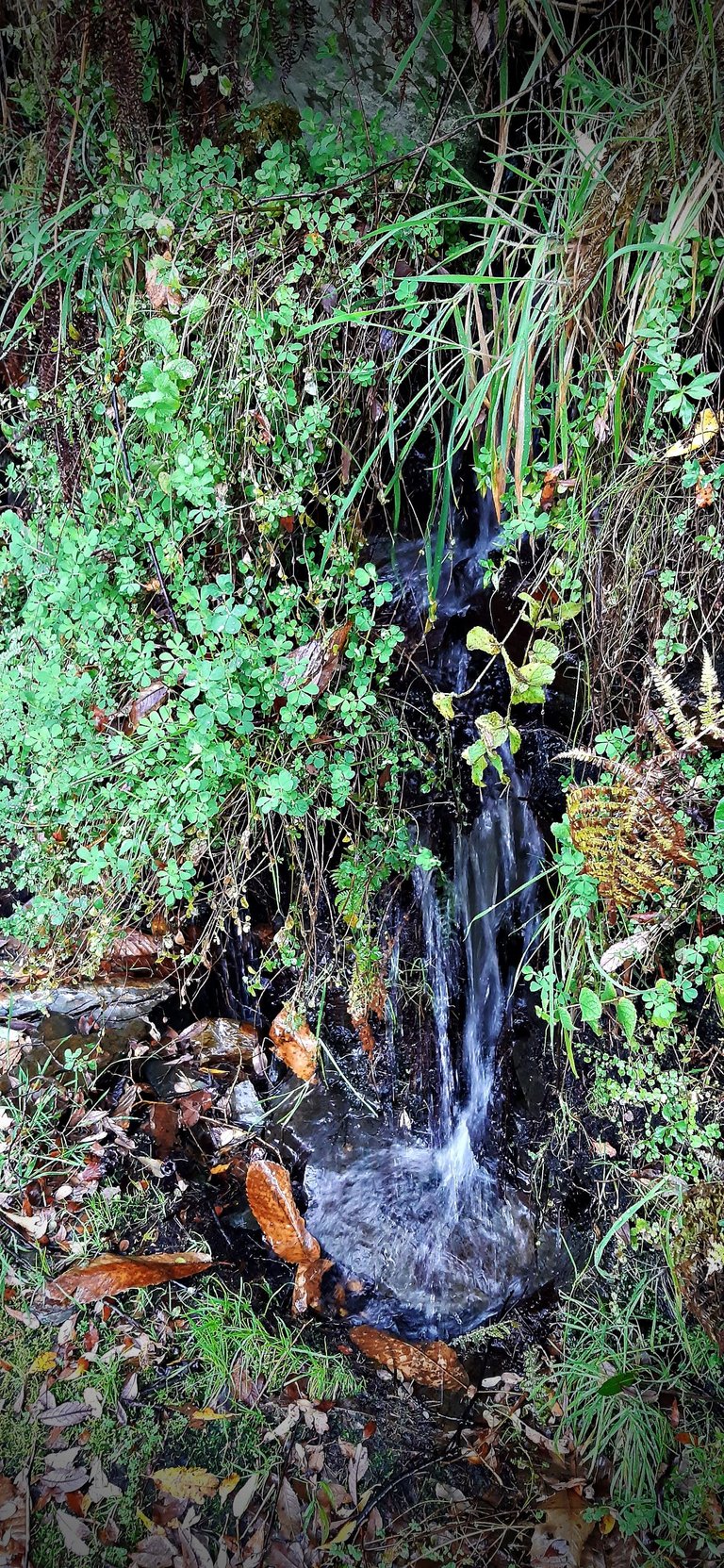

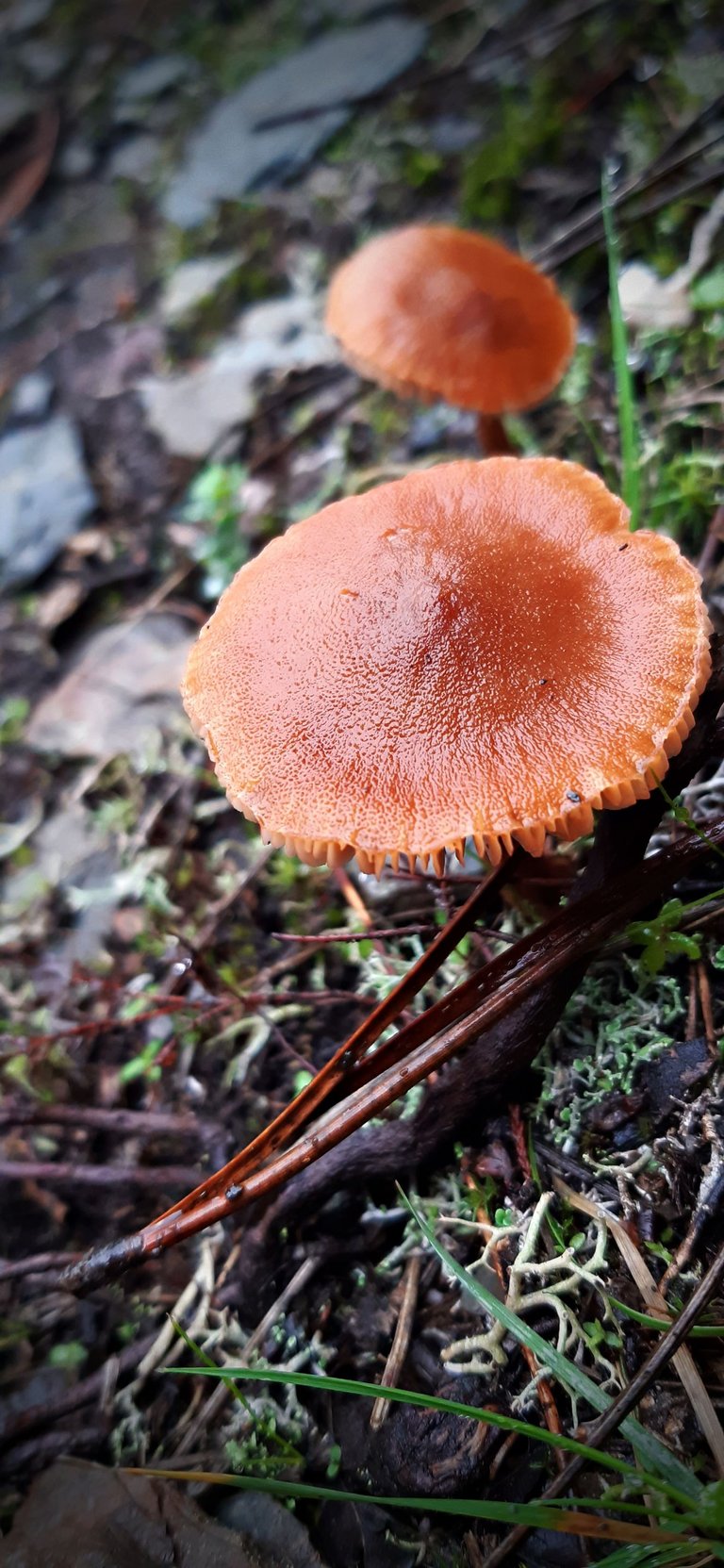
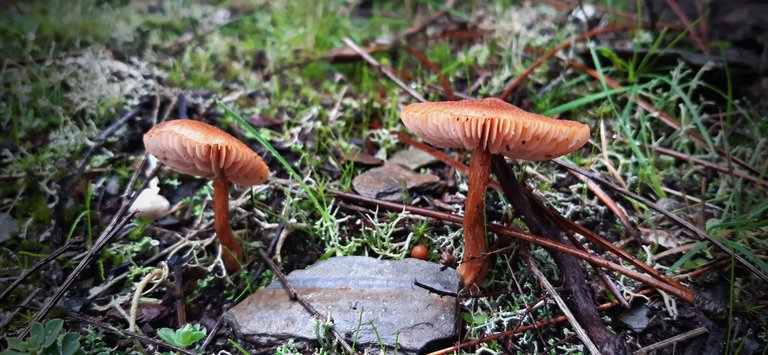
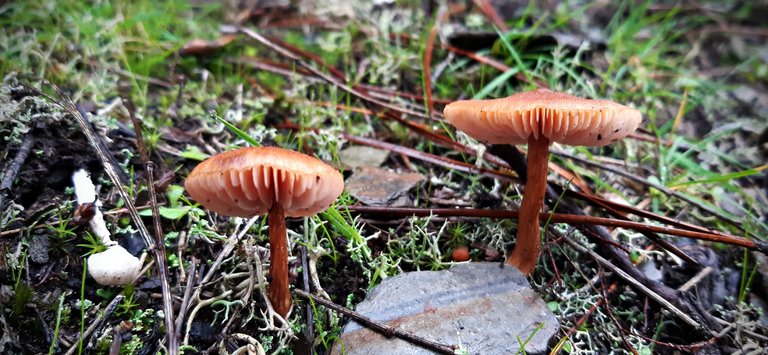
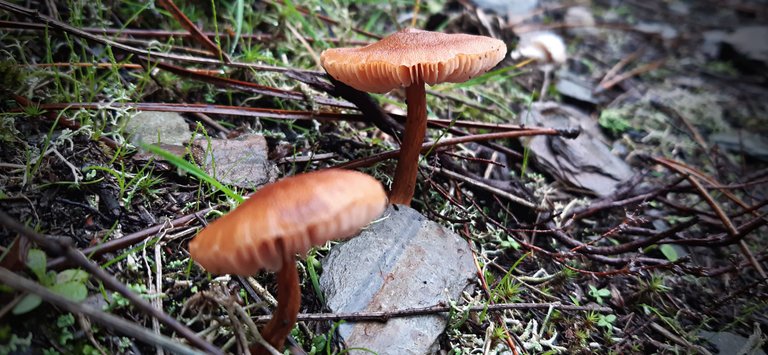
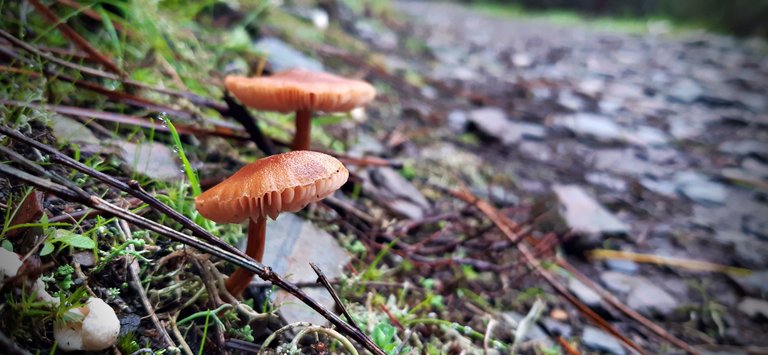
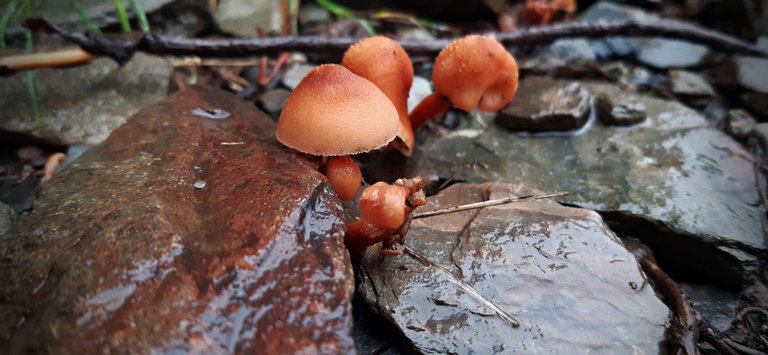
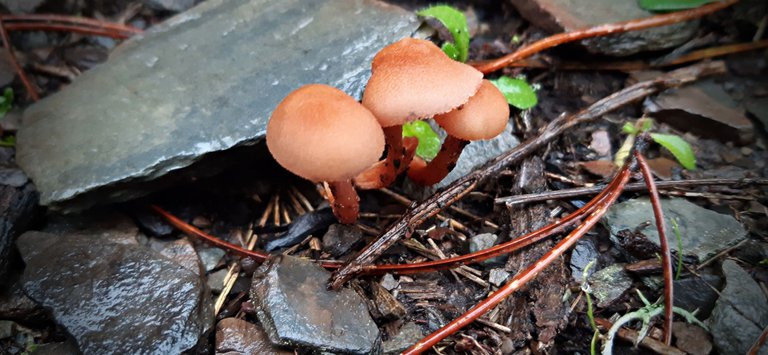
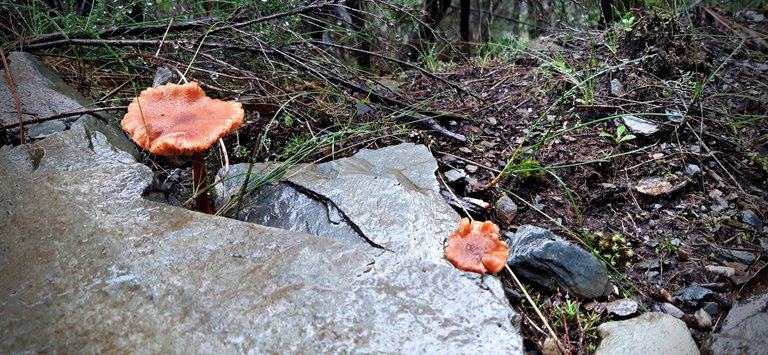
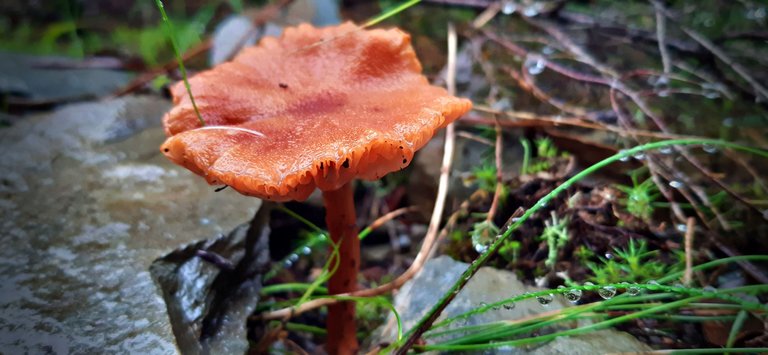

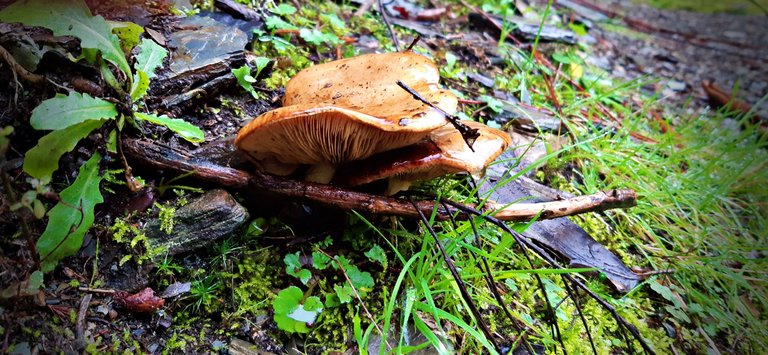
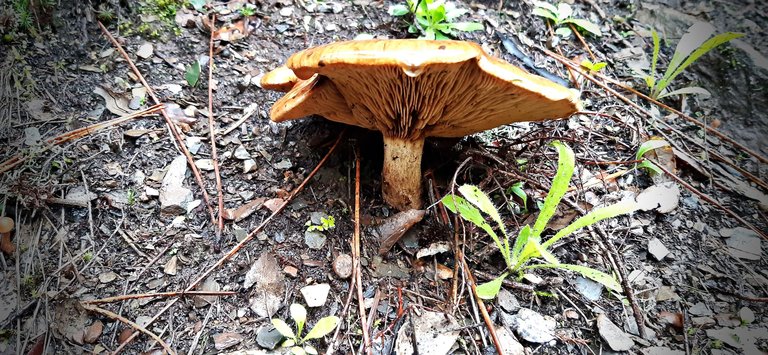
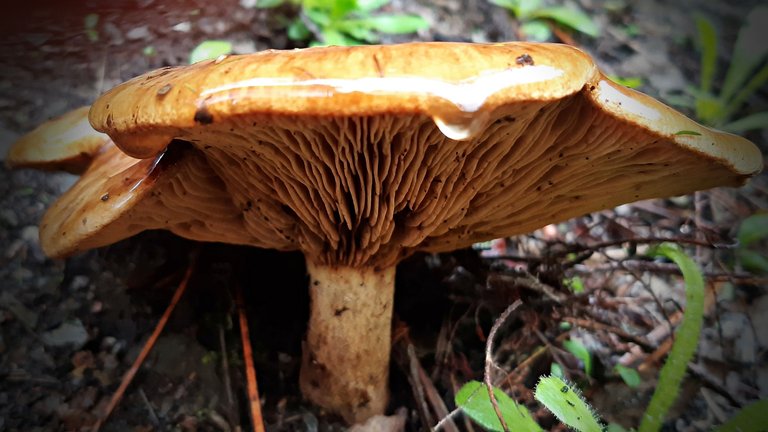

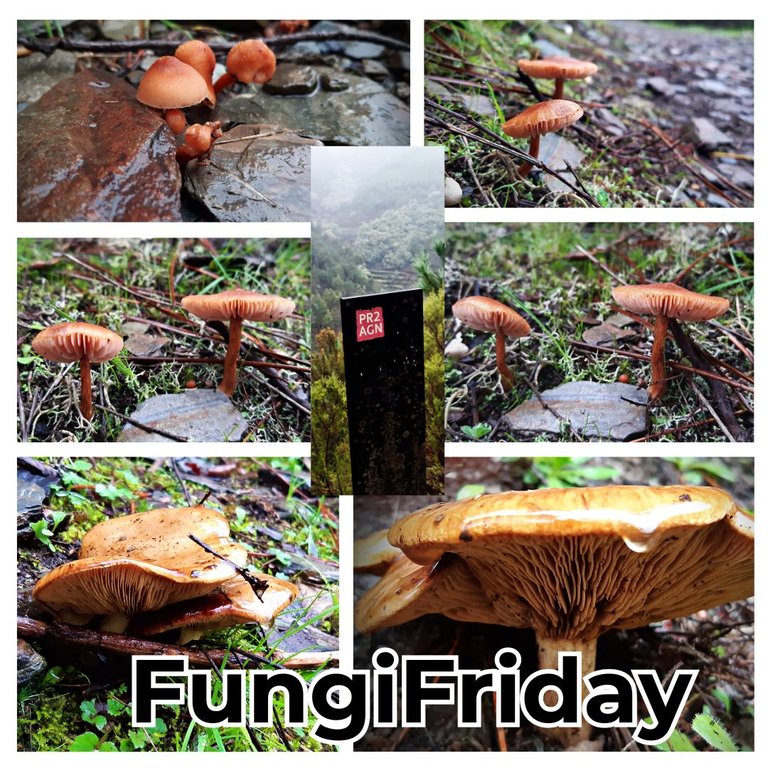

I look forward for the confirmation of the identifications I made using Google lens...
Sources used for this post:
https://pt.wikiloc.com/trilhas-caminhada/pr2-1-arg-piodao-foz-de-egua-36936164
https://en.wikipedia.org/wiki/Laccaria_laccata
https://en.wikipedia.org/wiki/Lactarius_deliciosus
I hope you enjoyed my humble post here in your #FungiFriday community!
Thank you for taking the time to read my post
Bem Hajam🍀
Photographic edition with PhotoScape X

